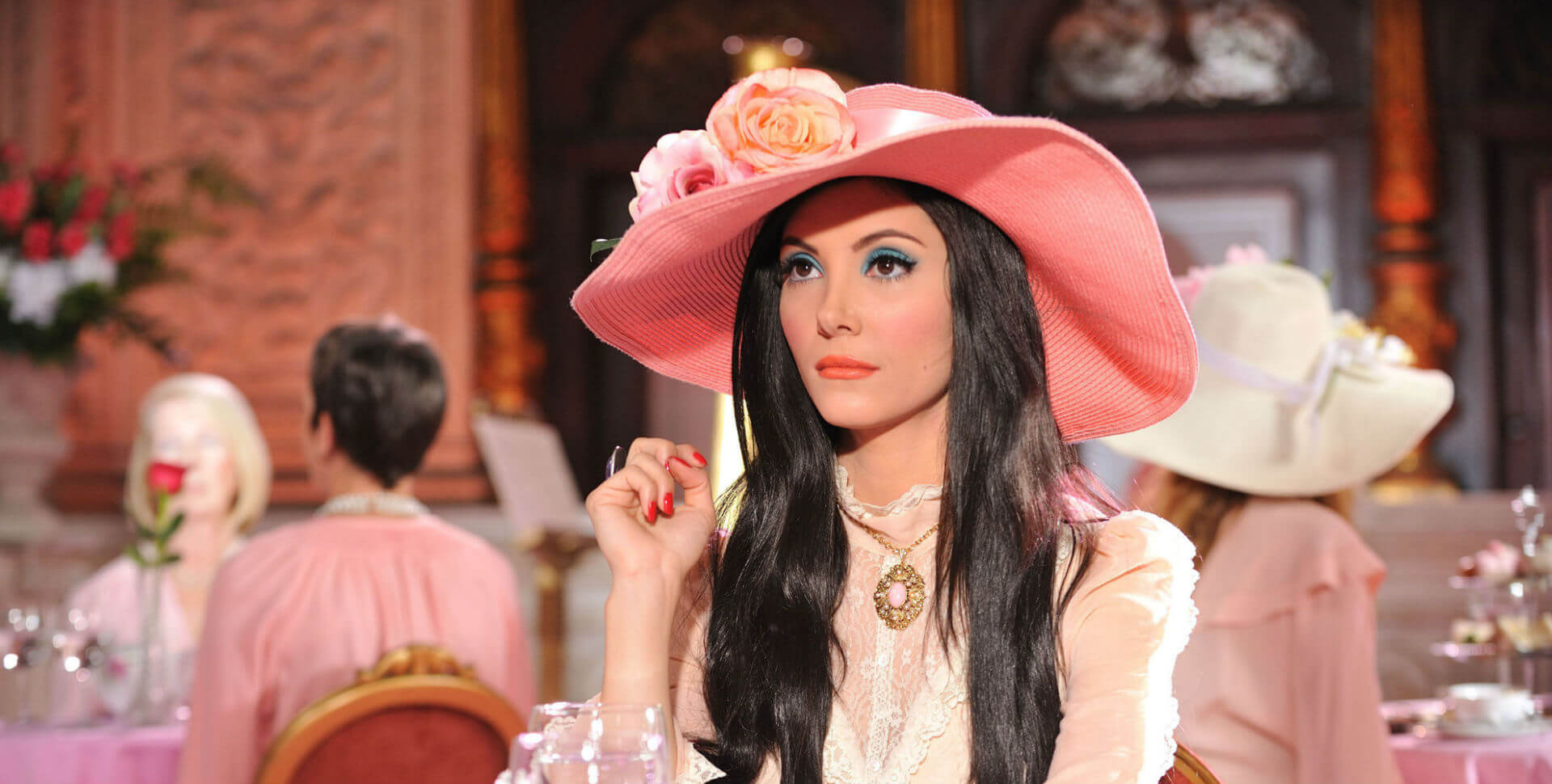The Love Witch [2016] follows Elaine, a modern-day, love-obsessed witch determined to lure a worthy husband.
Auteurist and Anachronistic… Unlike the typical Hollywood production, The Love Witch is a work that simply would not and could not exist if not for the singular vision of its writer-director, producer, editor, composer, costume designer, production designer, and set decorator Anna Biller. The multi-talented artist, who also starred in her first feature, 2007’s Viva, but here works solely behind the camera, has created her own world, an anachronistic cinematic treasure trove reminiscent of many things but in the end unlike any of them. There are classic cars and glossy iPhones, Victorian tearooms and repurposed tampons, Renaissance faires outside stables and coven meetings inside strip clubs. It’s all shot beautifully in 35mm, backdropped and lit as if produced half a century ago. The resulting images are stunning, and Biller’s meticulously crafted sets and handmade costumes, seven years in the making, are unforgettable. In the midst of dialogue, you may find yourself studying the wallpaper in an apartment or savoring a witch’s dress. Even the characters in the movie have to stop to take it all in. A woman turns away from a lunch companion to appreciate a harp player, and when she turns back, their conversation stalls: “Where were we?” The visual details are not just as important as the story; they are the story.
A Feminist Tragicomedy… That The Love Witch is captivating throughout its undoubtedly bloated two-hour runtime is not only a testament to Biller’s talent as a multimedia artist but also to lead Samantha Robinson’s as an actor. Elaine is a challenging role. She’s a character who never fully captures our sympathies and exists throughout the story in a peculiar space between tragedy and comedy, and, appearing in her first feature, Robinson totally owns it. But while in Viva, we see Biller as a suburban housewife whose life is dictated almost entirely by her husband before she breaks free and undergoes a sexual revolution, Elaine’s revolution is conveyed only briefly through flashback and thus her actions are harder to justify and our sympathies more conflicted. Consequently, though the movie’s got a lot to say about feminism and the roles women and men are expected to play in the average heteronormative relationship, the narrative is most successful in spelling these ideas out intellectually, through dialogue and narration, instead of emotionally, through Elaine’s magical journey. But when Biller gives us sequences like that of two students soaking up a history lesson on witches while a woman strips onstage, she nonetheless makes it all a bit hard to shake.
In the end, The Love Witch is not a film everyone will enjoy; none of the best films are.
Its charms are also its challenges, but to see Anna Biller’s labor of love is to at the very least admire it.

